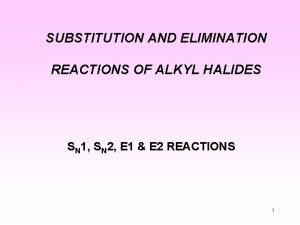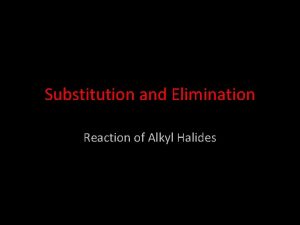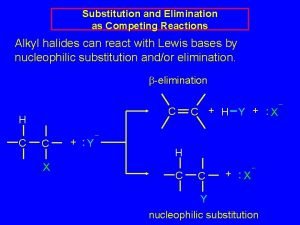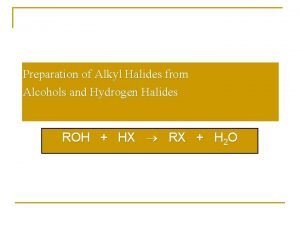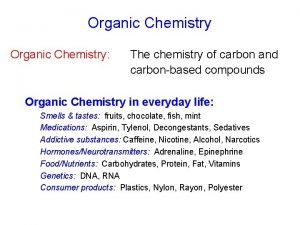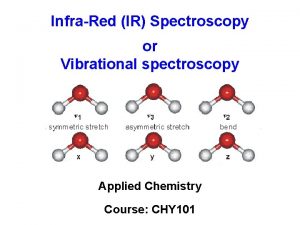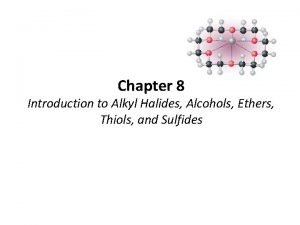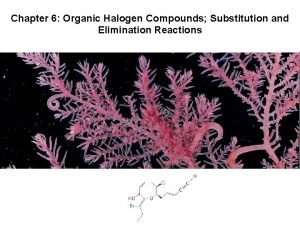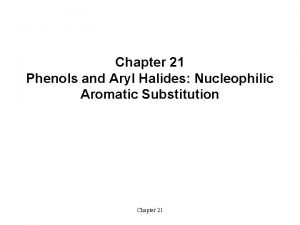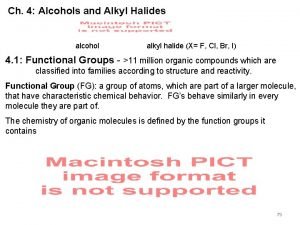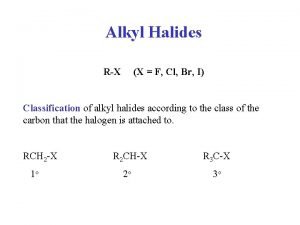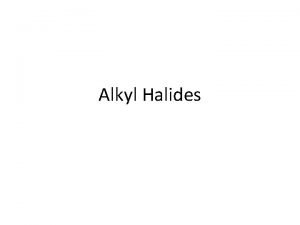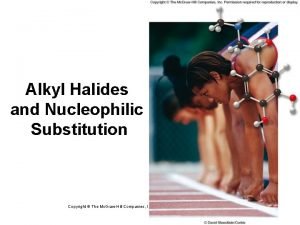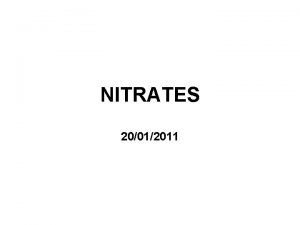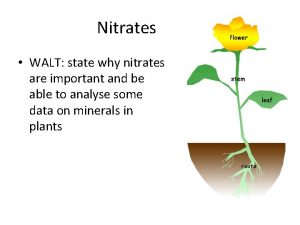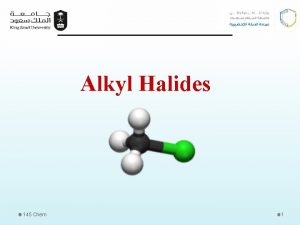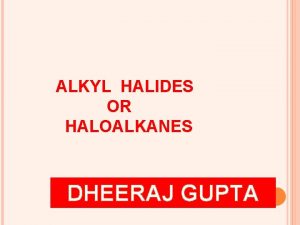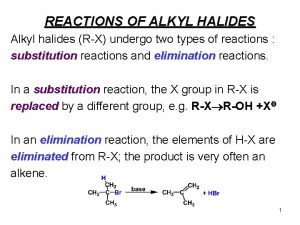Detection of alkyl nitrates ANs and peroxyacyl nitrates









![3. TD-CEAS characterization Ø According to the spectral fitting of CEAS, [ANs] and [PNs] 3. TD-CEAS characterization Ø According to the spectral fitting of CEAS, [ANs] and [PNs]](https://slidetodoc.com/presentation_image_h2/585d1e7943bf7c0c6c9cc6b5cf6bc88b/image-10.jpg)



![Diurnal variations Ø [ANs] / [PNs] had peak during the day, [ANs] at 11 Diurnal variations Ø [ANs] / [PNs] had peak during the day, [ANs] at 11](https://slidetodoc.com/presentation_image_h2/585d1e7943bf7c0c6c9cc6b5cf6bc88b/image-14.jpg)
![The limitations of the current single channel TD-CEAS Ø [NO 2] shows irregular jitters The limitations of the current single channel TD-CEAS Ø [NO 2] shows irregular jitters](https://slidetodoc.com/presentation_image_h2/585d1e7943bf7c0c6c9cc6b5cf6bc88b/image-15.jpg)


- Slides: 17

Detection of alkyl nitrates (ANs) and peroxyacyl nitrates (PNs) by a TD-CEAS (thermal dissociation - cavity enhanced absorption spectrometer) system Chunmeng Li, Haichao Wang, Keding Lu State Key Joint Laboratory of Environmental Simulation and Pollution Control, College of Environmental Sciences and Engineering, Peking University, Beijing, 100871, China.

Contents 1. Introduction 2. Characterization of the CEAS for NO 2 detection 3. Characterization of the TD-CEAS 4. Field observations 5. Conclusions

Ø Organic nitrates (ONs) 1. Introduction hv O 3 NO 2 � R=R include PNs (RCO 3 NO 2) & ANs (RONO 2); Ø The formation of ONs OH NO 3 � � is initiated by O 3, OH R=R and NO 3; R=R/R-R O 2 SOA Ø ONs can be very useful indicators for the kinetic NO RO 2 Criegee NO 2 VOCs, NO, CO RONO 2 regime determination RO + NO 2 hv RO 2 NO 2 VOCs O 3 p RONO 2 VOCs, NO and mechanism development; Ø ONs have an effect on the formation of O 3; Anthropogenic emission Biogenic emission Ocean Ø ONs are the important precursors of SOA.

2. Characterization of the Cavity Enhanced Absorption Spectrometer NO 2 has distinct absorption peaks at 300 -500 nm, so a single-colour LED centered at 450 nm is used as the light source. Lambert Beer's law: Cavity technology to increase the optical path. ---L (extinction coefficient ) (Rayleigh scattering) (Mie scattering)

3. TD-CEAS characterization — Efficiency of Thermal Dissociation Ø Photochemical source:PAN in zero air are generated by acetone photolysis at 285 nm in the presence of O 2 and NO. Ø PAN: Me. N=2: 1. Fused silica enclosure to house Hg lamp does not attenuate the output in the near-UV, which promotes further reactions of CH 3 to generate methyl nitrate (Me. N). • Normalized TD signals of thermal dissociation of standard source based on the total concentration of ONs.

3. TD-CEAS characterization — Efficiency of Thermal Dissociation Ø At 180 ℃, PAN (blue line) is completely pyrolyzed and Me. N is not pyrolyzed at all. ANs (red line) is pyrolyzed totally when the temperature is above 360 ℃. Ø Quartz tubes to measure PNs/ANs are heated at 180 ℃/ 380 ℃, which is similar to previous pyrolysis temperature.

3. TD-CEAS characterization Ø Instrument: 110 cm x 60 cm x 50 cm, ~300 w; Ø Sample gas: 2. 4 L/min; Ø Detection limit and time resolution: 1σ =97 pptv, time resolution = 6 s Ø Reflectivity:N 2 and He

3. TD-CEAS characterization Ø Purge gas to prevent the HR mirrors from pollution: 100 sccm × 2; Ø deff: the effective cavity length due to the purge gas; Ø Experiment in Lab: determination of [NO 2] under two conditions with or without purge in the cavity by using the same NO 2 stand source(≈130 ppbv). deff / L= [NO 2 ]with/[NO 2]without

3. TD-CEAS characterization Ø One CEAS is used to detect; Ø Multiple components (solenoid value, T-shaped tee) aim to achieve alternate measurement; Ø Airflow is stable in 3 channels. Ø One measurement cycle for 3 min, including 3 measurement phases; Ø Time resolution: 6 s; Ø red dots: [ANs]+[PNs]+[NO 2], blue dots: [PNs]+[NO 2], black dots: [NO 2]
![3 TDCEAS characterization Ø According to the spectral fitting of CEAS ANs and PNs 3. TD-CEAS characterization Ø According to the spectral fitting of CEAS, [ANs] and [PNs]](https://slidetodoc.com/presentation_image_h2/585d1e7943bf7c0c6c9cc6b5cf6bc88b/image-10.jpg)
3. TD-CEAS characterization Ø According to the spectral fitting of CEAS, [ANs] and [PNs] can be determined by two methods; Ø ‘CONC’ method: Ø ‘SPEC’ method: • The data is the measurement results of CHOOSE campaign on September 8, 2019.

Comparison to other ANs/PNs instrument Tech Measuring Parameter TD-LIF Fluorescence spectrum TD-CIMS Mass spectrum TD-CAPS Phase shift TD-CRDS Measure species Calibration ANs, PNs, NO 2 PAN/ethyl nitrate/npropyl nitrate/NO 2 standard source Pi. BN, PAN, PPN, PAN/MPAN/PPN MPAN standard source PAN/PPN/methyl, isopropyl, isobutyl, n-pentyl nitrates/NO 2 ANs, PNs, NO 2 standard source Ring-down time ANs, PNs, NO 2 2 -propyl nitrate/PAN/NO 2 standard source Ring-down time ANs, PNs, NO 2 Temporal/ Spatial resolution DL Accuracy 10 s 90 pptv 10 -15% 1 -15 s 3 -7 pptv 20% 2 min 21 pptv Main interference Ref Thermal interference Day et al. , 2002 Acetone, acetic acid, peracetic acid Slusher et al. , 2004 Thermal interference Sadanaga et al. , 2016 6%+20 pptv +(20 pptv*RH /100) Thermal interference, RH Thieser et al. , 2016 Sobanski et al. , 2016 1 s 28 pptv, 2 -propyl nitrate/i-butyl nitrate/PAN/NO 2 standard source 1 s 80 pptv, 94 pptv, 59 pptv 8% Thermal interference TD-PERCACRDS Ring-down time PNs NO 2/PAN standard source 1 s 2. 6 pptv 9% Thermal interference Taha et al. , 2018 TD-CEAS Absorption spectrum ANs, PNs, NO 2 PAN /Me. N standard source 6 s 97 pptv 8% Thermal interference This study

4. Field observations Ø The first field observation named CHOOSE was deployed in XINJIN, Chengdu, China, in 2019; Ø An example time series of [NO 2], [PNs] and [ANs] measured during an ozone pollution in CHOOSE campaign.

Field intercomparison of NO 2 and PAN Ø The results of TDCEAS is a little higher than PL-CLD, which may be due to the different sampling position; Ø GC-ECD used the PAN source generated by the photochemical reaction for calibration, which may make the sensitivity high.
![Diurnal variations Ø ANs PNs had peak during the day ANs at 11 Diurnal variations Ø [ANs] / [PNs] had peak during the day, [ANs] at 11](https://slidetodoc.com/presentation_image_h2/585d1e7943bf7c0c6c9cc6b5cf6bc88b/image-14.jpg)
Diurnal variations Ø [ANs] / [PNs] had peak during the day, [ANs] at 11 am , [PNs] at 12 am; Ø The high value of [ANs] lasted longer during the day than [PNs]; Ø [NO 2] kept high concentration at nigh, and started to fall at 8 am.
![The limitations of the current single channel TDCEAS Ø NO 2 shows irregular jitters The limitations of the current single channel TD-CEAS Ø [NO 2] shows irregular jitters](https://slidetodoc.com/presentation_image_h2/585d1e7943bf7c0c6c9cc6b5cf6bc88b/image-15.jpg)
The limitations of the current single channel TD-CEAS Ø [NO 2] shows irregular jitters at night, and the corresponding [PNs] and [ANs] had larger errors; Ø [NO 2], [PNs] and [ANs] all had small jitter during the day; Ø when the [NO 2] change drastically, the difference in [NO 2] between adjacent measurement phases in a • The data is the measurement results of CHOOSE campaign on August 15, 2019. cycle will be large, resulting in larger errors.

5. Conclusion Ø A single channel TD-CEAS system is successfully developed for the selective measurement of NO 2, ANs and PNs sequentially. Ø The instrument can be calibrated and characterized with a conventional PAN calibration source which contains both PAN and Me. N. Ø During its field deployment, the measured NO 2 and PNs showed good agreement with the corresponding observed values from CLD and GCECD, respectively. Ø More characterization are still required to account the influence of the side reactions which take place at thermal dissociation tube.

THANK YOU!
 Thermal stability of group 1 nitrates
Thermal stability of group 1 nitrates Magnesium nitrate thermal decomposition
Magnesium nitrate thermal decomposition Solvents for sn2 reactions
Solvents for sn2 reactions Reaction of alkyl halides
Reaction of alkyl halides Nucleophilic substitution of alkyl halides
Nucleophilic substitution of alkyl halides Preparation of alkyl halides from alcohols
Preparation of alkyl halides from alcohols Isomers of hexane structure
Isomers of hexane structure Water gas
Water gas Alcohols nomenclature
Alcohols nomenclature Nucleophilic substitution of alkyl halides
Nucleophilic substitution of alkyl halides Primary alkyl halide
Primary alkyl halide Alkyl aryl
Alkyl aryl Alcohol to chloride
Alcohol to chloride Primary alkyl halide
Primary alkyl halide Alkyl dihalide
Alkyl dihalide What are active metals
What are active metals Name the following alkyl halides
Name the following alkyl halides Alkyl halide reactions
Alkyl halide reactions


